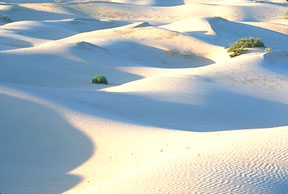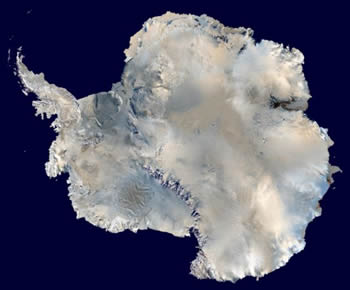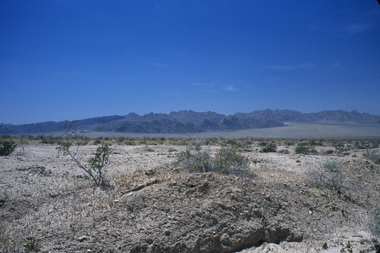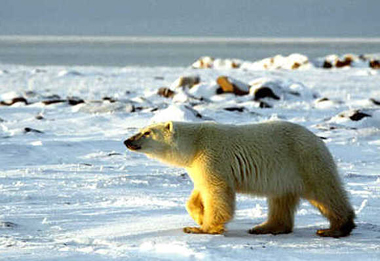Click on image for full size
Extreme Environments - Temperature and Moisture
This page describes environments that are very hot or very cold, really dry, or both. It is easy for living creatures to survive and grow in some places. Other places make it tough for life to get by. Scientists call places that are hard on life "extreme environments".
What kinds of places are "extreme environments"? Some that you may know about are deserts, mountain peaks, caves, and frozen places like the Arctic and Antarctic. Some extreme environments are filled with acids, are blasted with radiation, are under high pressure, or are tough places for most living things in other ways.
Just because an environment is extreme doesn't mean there is no life there. Certain creatures can live and grow in extreme environments. Scientists have a special name for creatures that live in extreme environments. They are called "extremophiles".
Many environments are too hot or too cold for most living creatures. The heat in deserts like the Sahara in Africa and Death Valley in North America makes it hard for life to survive there. Are there other hot environments that you may not know about? Hydrothermal vents in the ocean floor spew out very, very hot water. Geysers and hot springs in places like Yellowstone National Park in the USA also contain water that is too hot for most living creatures.
Really cold environments are tough on life too. The ice caps, snow fields, and sea ice found in the Arctic and Antarctic are examples of cold environments. High mountaintops around the world are also usually quite chilly. The deep oceans are not quite frozen, but they are still pretty cold, too. Water in the deep parts of the ocean has a temperature between 0° and 4° C (32° and 39° F).
Places that are very dry are also extreme environments. The lack of water in deserts is hard on life. Many deserts are both very hot and very dry. Did you know that some deserts are cold instead of hot? Antarctica is actually Earth's largest desert! The Dry Valleys in Antarctica are some of the driest places on our planet. How dry can deserts be? Some places in the Atacama Desert in Chile get an average of less than 1 millimeter (0.04 inch) of rainfall a year! Sometimes many years go by there with no rain at all.













